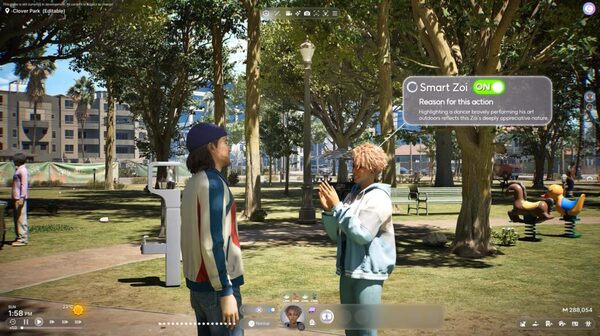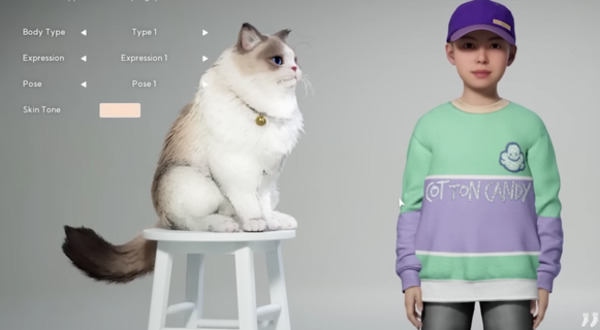Popular Now
inZOI is renowned for many groundbreaking features, but one of its most impressive systems lies in the power and precision of its home customization and interior design tools. Unlike most life simulation games that provide limited building mechanics or stylized presets, inZOI elevates player creativity by merging photorealistic visuals with deeply functional design systems. In this article, we’ll explore every stage of inZOI’s home customization system—from lot selection and floor planning to detailed furnishing and mood-based design theory. By the end, you’ll understand how to craft dream homes that not only look stunning but also enhance your character's lifestyle and well-being.
Choosing the Perfect Lot and Starting Blueprint
Before laying a single brick, inZOI challenges players to think like real estate developers.

Location Matters
Lot selection affects everything—from scenic views and space for expansion to noise levels and neighborhood dynamics. Players can choose from city centers, suburban blocks, and coastal escapes, each with unique perks.
Starting Blueprints vs. Empty Lots
-
Pre-built Blueprints: Great for beginners and quick game starts.
-
Empty Lots: Ideal for full creative control but require time investment.
Making the right choice here sets the tone for your entire design journey.
Structuring the Foundation: Floor Plan Design
Once the lot is secured, players dive into floor planning, a step that marries architecture with strategic gameplay.
Gridless Layouts and Precision Tools
Unlike traditional life sims, inZOI does not lock players into grid-based placement. This allows for curved walls, asymmetrical rooms, and multi-level layouts—replicating real-world architecture more closely.
Flow and Functionality
When planning layouts, consider:
-
Natural light paths
-
Room adjacency (e.g., bedrooms near bathrooms)
-
Accessibility for characters with mobility constraints
This phase balances realism with efficient in-game routines.
Mastering Room Types and Zones
Different rooms serve different purposes, and inZOI treats them with unique mechanics that go beyond visuals.
Room Classification
Each room type—bedroom, kitchen, study, etc.—has predefined interactions and furniture tags. For example:
-
Kitchens require plumbing, cooking appliances, and safety exits.
-
Bedrooms influence sleep quality and morning routines.
Specialized Zones
Players can create hybrid spaces like:
-
Home offices that integrate leisure items for productivity boosts
-
Indoor gardens that reduce stress and improve air quality for characters
These zones add layers of personality to any home design.
Material Choices and Realism in Aesthetic Decisions
inZOI doesn’t just let you slap down wallpaper—it demands design with purpose.

Surface Materials and Realistic Textures
Floors and walls can be clad in dozens of real-world materials like concrete, marble, recycled wood, or even metal mesh. Each choice has visual and auditory implications. Walking on tile feels different from walking on plush carpet.
Realism-Driven Aesthetic Outcomes
Lighting reflects off glossy vs. matte finishes differently. In darker rooms, brighter wall colors help diffuse natural light. These tiny details make a big visual impact.
Furniture Placement and Functional Impact
Placing furniture isn’t about filling space—it’s about improving the functionality and livability of each room.
Furniture Categories and Utility Tags
Items are divided into:
-
Functional (beds, toilets, ovens)
-
Decorative (paintings, rugs, sculptures)
-
Hybrid (smart TVs, bookshelves, plants with mood buffs)
Each piece of furniture affects character behaviors, moods, or interactions.
Optimization and Clutter Management
Over-furnishing can block AI pathfinding or overwhelm characters emotionally. inZOI tracks comfort levels and ease-of-use, making placement a strategic choice.
Lighting Systems and Mood Effects
Lighting in inZOI is more than a cosmetic layer—it plays a direct role in mood, productivity, and realism.
Day-Night Cycle Adaptation
Lighting options include:
-
Natural windows with adjustable blinds
-
Smart lighting with scheduled routines
-
Candlelight and soft lamps for ambiance
The game simulates color temperature and intensity throughout the day.
Emotional Resonance
Mood-specific lighting setups affect character feelings. Blue lighting can relax, red boosts energy, and dim lights improve sleep onset. This layer integrates emotional storytelling into design.
Smart Appliances and Future-Tech Integration
Home customization isn't stuck in the present—players can integrate smart tech for automation and upgrades.

Automation Systems
Set routines for:
-
Morning blinds
-
Climate control
-
Energy-efficient lighting
These reduce bills and improve comfort over time.
In-Game Technological Progression
Homes can be retrofitted over time. Starting with analog appliances, players unlock smarter gadgets through character skill progression or in-game stores.
Personalization Through Character Preferences
Designing a beautiful house is easy—designing one that fits your character is a higher challenge.
Emotional Attachment to Decor
Each character has likes/dislikes:
-
Modern vs. vintage furniture
-
Bold vs. neutral color palettes
-
Open vs. enclosed layouts
Ignoring these may lower their happiness or cause social conflict.
Relationship-Driven Decor Choices
Designs can also reflect family dynamics. A teen might want a music studio in the garage. Parents may prefer minimalist calm. Balancing these builds narrative depth.
Home Maintenance and Environmental Systems
inZOI adds realism through systems that simulate real-life maintenance and environmental impact.
Wear and Tear Mechanics
Furniture and appliances degrade over time. Players must:
-
Repair or replace items
-
Schedule maintenance checks
-
Invest in durability upgrades
Neglect leads to fire hazards, broken plumbing, and character dissatisfaction.
Eco-Friendly Design Choices
Going green isn't just moral—it's strategic. Solar panels reduce bills, rainwater collectors aid gardening, and compost bins help sustainability. There’s even an eco-score for each home.
Hosting Events and Social Dynamics in Homes
A well-designed home becomes a social hub. inZOI lets players host events that influence gameplay.

Event Types and Guest Reactions
Common events include:
-
Dinner parties
-
Housewarming
-
Work-from-home presentations
Guest feedback depends on the environment, cleanliness, and decor appropriateness.
Social Buffs and Reputation
Good hosts gain reputation, leading to:
-
Career promotions
-
Improved friendships
-
Relationship options
This encourages players to design for both aesthetics and functionality.
Conclusion
The home customization system in inZOI isn’t just a game feature—it’s a creative sandbox, simulation challenge, and emotional storytelling device rolled into one. With tools that rival architectural design software, mechanics that reflect real-world needs, and emotional reactions that bring homes to life, inZOI raises the bar for what’s possible in life simulation. Whether you're building a minimalist apartment for a career-driven character or crafting a sprawling mansion with eco-conscious designs, every brick, curtain, and chair matters. The game gives players not just the freedom to build, but the reason to build with purpose.















